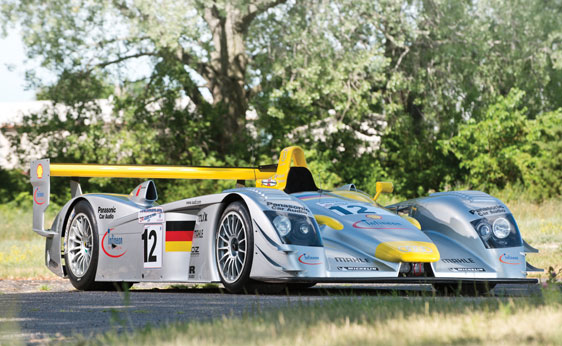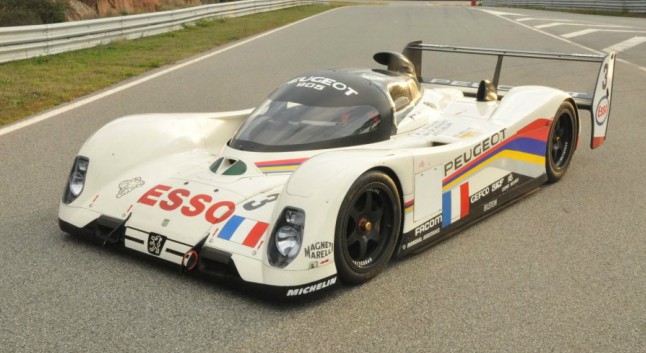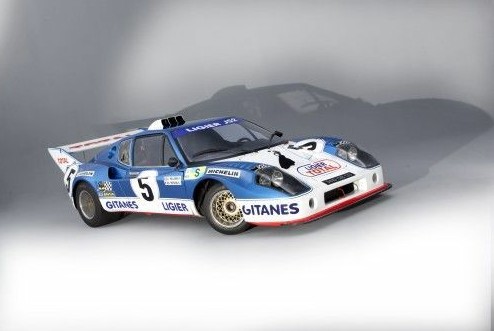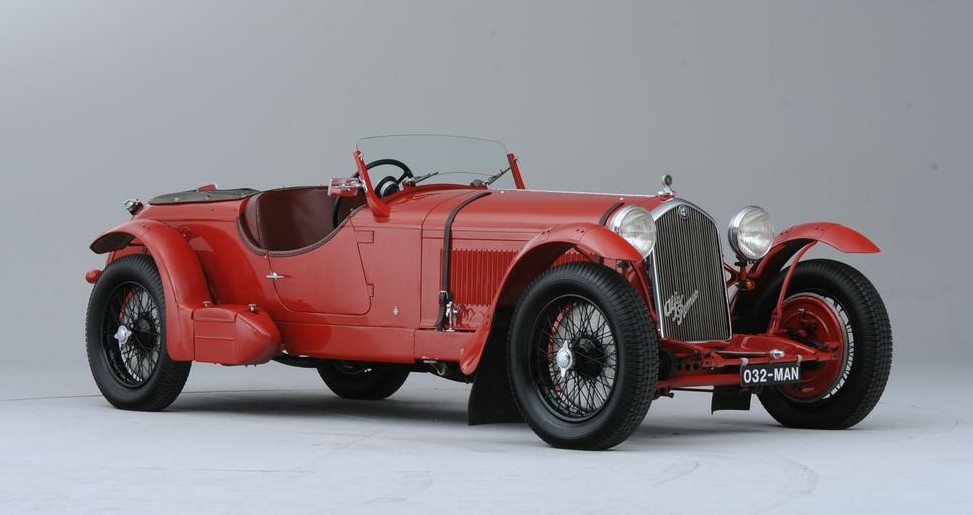2001 Bentley EXP Speed 8
Offered by RM Auctions | Monterey, California | August 18, 2012

Volkswagen acquired Bentley in 1998, the same year Audi (a VW subsidiary since 1969) announced its intention to compete in the 1999 24 Hours of Le Mans. Audi was brand new to prototype racing and its closed-roof R8C (as well as the open-top R8R) both raced at the 24 Hours in 1999. An R8R finished on the podium in 3rd and one came home 4th, but they didn’t win. So, for 2000, both cars were replaced by the legendary Audi R8, which won the race five times.
Bentley had, up until 2000, also won the 24 Hours of Le Mans five times, the latest of which came in 1930. A Bentley hadn’t even appeared at the track since 1933. So Ferdinand Piech, head of the VW Group (and grandson of Ferdinand Porsche), declared Bentley would return to the track. And when Dr. Piech declares something, it happens: like the Bugatti Veyron. I imagine the green-light meeting for the Veyron going down as follows:
- Accountant: “But, Dr. Piech, we stand to lose millions from this project.”
- Piech: “Ja, but ve vill be zee fastest!”
The plan was for Bentley to show up at the 2001 24 Hours of Le Mans. But instead of just straight copying the Audi R8, the crew at Racing Technology Norfolk (who were responsible for developing the car) based their design on the closed-coupe Audi R8C that was no longer competing. And they managed to turn that odd duck race car into this beautiful monster.
The car used the same engine from the Audi, the 670 horsepower 3.6-liter twin-turbocharged V8. Two cars were prepared for the 2001 race, including this one. Only one competed in 2002. In neither year was Bentley triumphant – but Audi was, both times. So in 2003, the Audi factory team (Audi Sport Team Joest) “took the year off” – and all of the normal factory Audi drivers drove Bentleys and came home 1-2. Piech was satisfied and the program ended then and there. It’s really an incredible thing when you think about it: an eccentric German auto executive buys an automobile company with a historic racing pedigree then decrees they will return to their former glory. And all in a few years time. And then they do it. Then they walk away immediately after having proven their point.
The Bentleys were never even entered at any race but Le Mans. Which, too, is awesome as it shows they weren’t concerned with championships or anything but winning the race that Bentley was known for winning. The brief competition history of this car is:
- 2001 24 Hours of Le Mans – 3rd (with Andy Wallace, Eric van de Poele and Butch Leitzinger)
That’s it. Nine cars were built – four of them EXP Speed 8s (2001 and 2002) and five Speed 8s (2003). The difference between them is a slight bodywork change around the nose as well as an expansion to 4.0-liters for the later cars. Not all of them raced due to the program being cut after the win in 2003. There were also two test mules built.
They never even had sponsorship – the car just said “Bentley” – showing it wasn’t about money but pride. The car is listed as in race-ready condition and will undoubtedly be welcome at just about any event anywhere. The pre-sale estimate is $1,900,000-$2,500,000. For the complete lot description, click here. And for more from RM in Monterey, click here.
Update: Sold $2,530,000.




 Oh boy. This is one of my all-time favorite cars. A few months ago we featured this car’s largest rival – the
Oh boy. This is one of my all-time favorite cars. A few months ago we featured this car’s largest rival – the 
